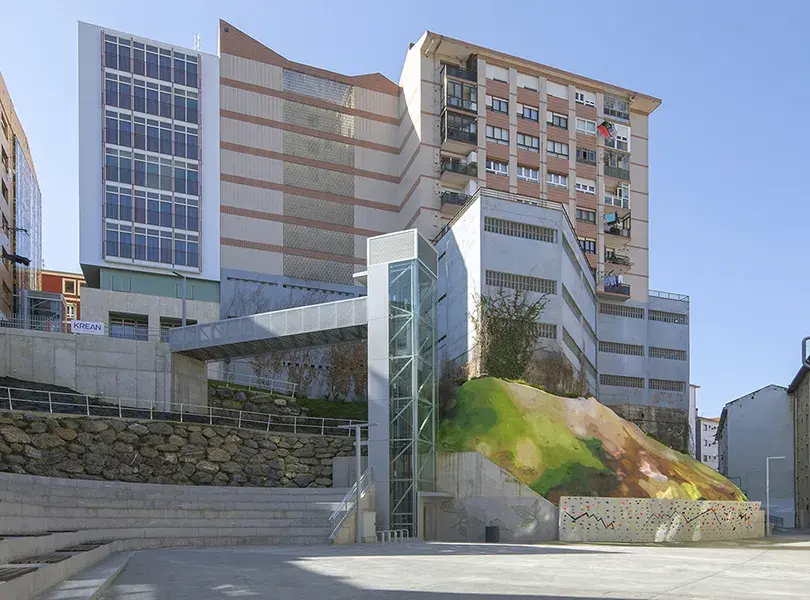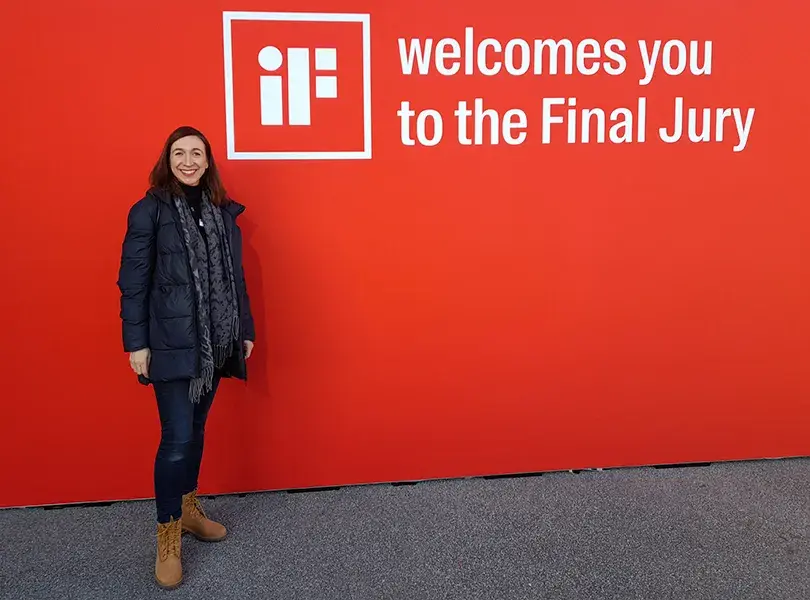In an interview conducted by Maite Reizabal for EnpresaBIDEA, Aintzane Marauri, Industrial Engineer and Project Manager at KREAN, says that the firm is experiencing a great moment of activity and development.
EnpresaBIDEA is a digital newspaper in Basque specialising in economic and business information. We transcribe here the interview conducted in Basque:
When we think of industrial infrastructures, many people think of a grey cube-shaped building. However, the construction of these infrastructures has evolved significantly in recent years and industrial building now tends to transfer the values and quality levels with which industrial companies currently work on their products and processes to their projects as a whole. Aintzane Marauri, head of projects at KREAN, works mainly in this field and in others such as photovoltaic energy parks or large DC Data Centres, sectors in which the engineering company integrated in the MONDRAGON corporation has made a strong entry in recent years.
To what extent has KREAN's vision of infrastructures and constructions changed to adapt to the new times?
If evolution and innovation has been and is constant in all areas, it is especially so in the industrial sector. Every day changes occur at a faster pace, and in KREAN we have always maintained a continuous adaptation to them. In general, we can say that in recent years the main changes have been, on the one hand, the increase in quality standards and environmental regulations, and on the other hand, the opening of the market, where we have gone from a local market to a global one.
We have long-standing customers, cooperatives in the MONDRAGON group and a good number of other companies, mainly from the Basque Country and Navarre. But little by little we have been attracting new clients, from different sectors and territories, both national and international. This has forced us to expand, to travel more… Twenty years ago, when I started, all projects were in Basque or Spanish. Now English is essential.
We are immersed in an era of transitions. How has digitalization influenced the way you work?
In terms of the digital transition, the leap to the BIM building information modelling system has meant an important change. In the technical development of projects, we have made the leap from working in two dimensions to working in 3D. The new generations come with that knowledge, but those of us who come from AutoCAD have had to train ourselves.
What about ecological and energy transitions?
In terms of the environment, it is becoming important for buildings to be as sustainable as possible: the reduction of consumption of electricity, of water... And that fundamentally affects two aspects: on the one hand, we need more knowledge and profiles with expertise in these areas, mechanical engineers, electrical engineers... On the other hand, all companies need to obtain environmental certificates to position their activity in the market, which is increasingly demanding and sensitive to this factor. The most widespread certifications are LEED (American) and BREEAM (British), and at KREAN we have already achieved a good number of these certifications with our clients.
A significant fact is that banks, when offering financing to companies that are going to make new investments, offer loans under better conditions the more sustainable the construction is. In any case, we must emphasize that beyond obtaining certificates, most companies have been working for some time to reduce the impact of their activity on the environment.
You manage industrial infrastructure projects where functionality plays a fundamental role. But how do you combine functionality and creativity?
Traditionally, design and image have been the domain of public service infrastructures, residential or tertiary buildings... Recently, industrial clients have been demanding to add design and value projection to the building's functionality. The Irizar electric buses manufacturing plant in Aduna (Gipuzkoa), or Orona Ideo in Hernani (Gipuzkoa) are clear examples of this trend.
That said, we cannot forget that the design of industrial infrastructures must always guarantee compliance with the functional requirements of the facility and propose solutions to increase production capacity.
Do you see a change in this trend?
Yes, as an engineer I always look more for functionality. But some customer often says to me: "Don't make another cube" [laughing]. That's where our fellow architects come in, who, as has been demonstrated, are more creative than engineers. Industry and engineering will always prioritize production, and with the intervention of design and architecture, the building acquires added value.
You have managed industrial infrastructure projects and also photovoltaic energy parks. What similarities do they have?
It is obvious that a photovoltaic park does not have much to do with an industrial building. Even so, for example, in terms of permitting, there are great similarities when it comes to executing both projects.
And what are the characteristics of industrial infrastructures compared to other buildings?
Architecture, facilities, ergonomics, etc. are the key in an office building. In an industrial infrastructure, the key is production. That is why it is essential to have a good knowledge of the production process, at least in its basic aspects, in order to understand why things happen and to modulate consistent, long-lasting solutions. This is undoubtedly one of the most attractive aspects of our work. Today we make a foundry, tomorrow a machine tool factory, and so on. I would say that the learning we get from working on this wide variety of projects is our main asset, our best value to take on new challenges and come up with innovative solutions.
You have also been in charge of project direction for the construction of several data centres. From the engineering point of view, what challenges have you found in the construction of these centers?
We are experiencing a certain boom in these infrastructures in the country, as has been the case with logistics in recent years. On the one hand, we have the challenge of the design of the building itself, which in a way follows the same pattern as other industrial buildings. On the other hand, the electrical and installation aspects of these DCs can vary from one client to another. This requires knowledge of the technology of each centre and each client, and studying it is the main task of our installation engineers. My colleagues and I are lucky enough to work in this type of centres for large firms in the global market, in different geographical locations such as Aragón, Álava, Gipuzkoa and Madrid.
You have underlined the importance of the integration of profiles: industrial engineers, electrical engineers, architects...
When we receive an order, we create multidisciplinary teams depending on the size and needs of the project. In a Data Centre, for example, in addition to the project director, usually an architect or engineer, we have a team around us, made up mostly of architects, electrical and mechanical engineers, structural experts, site technicians, draftsmen... The bigger the project, the more people and profiles are needed.
What is the current status of KREAN?
We are in a good moment. We have work, we receive many requests from a growing number of clients and we can say that in the Basque Country we are a leading firm in the engineering and architecture sector. Also in the state, our position as a reference engineering firm is growing every day. The wide variety of projects, sectors and locations in which we are working today leads us to look to the future with optimism.
How are you experiencing inflation and rising prices?
In the construction sector, prices have increased by 25% or 30%. That means that for a client who wanted to make an investment four years ago, the work will now have that additional cost. In order to face this situation, we have to present this cost increase to the client, although we try to adjust it as much as possible. Fortunately, few have interrupted their investments. We have also been affected by the rise in interest rates, since industrial investments are generally associated with financing.
With regard to the cities of the future, there are more and more movements that advocate that living space and working space should be as close as possible, including the so-called 15-minute cities. To what extent can this way of working influence the way KREAN works?
In Madrid, it's difficult to consider something like this; it takes our colleagues there an hour to get from home to work. In Gipuzkoa it's simpler: 80% of the people who work in an industry in Bergara come from Bergara or the area. In Gipuzkoa we don't have as much room for industry to grow much more; although new industrial estates are being built, there is not much more space for these developments. KREAN also offers its services for the search of locations to clients who need to relocate due to growth, and in these cases, they establish a maximum area of displacement. For example, no more than 30 kilometres from where they are. And that is not easy in a territory like ours.


